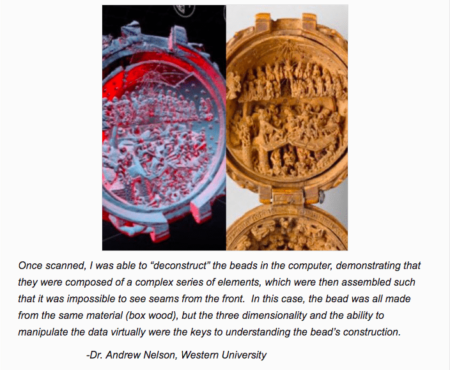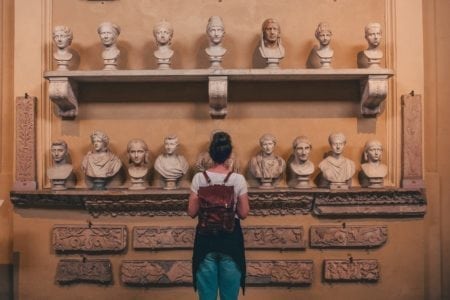When is a model of an artifact the artifact itself?
Historians and archivists use 3D scanning to take inventory of artifacts in a digital platform. We store documents, money, and mass information digitally, so is the future of historical record-keeping online? We think it’s a discussion worth having. The future of museum and historical fact-keeping will include 3D scanning to help preserve and analyze objects, independent from physical degradation or erosion.
3D scanning has brought huge opportunities, and a fair amount of disruption, to the life of museums. We’ve previously explored how museums like the Smithsonian and the Met have used 3D scanning to preserve artifacts, or even more amazingly, whole exhibits after they close. But can digital copies of artifacts ever actually replace them? Digitization comes with new territory: the inclusion of computer scientists within archeological teams, decisions about file format standardization for the field, and system updates to ensure no data is ever lost as technology continues to evolve. Plus, the more elusive questions about whether digital restoration of artifacts broken down by time or history in any way takes away from the richness of their heritage as objects.
Museums are taking it slow and thinking carefully when it comes to the heady excitement about allowing access to rare treasures through the powers of 3D scanning.
A New Kind of Analysis
It’s not just the general public and museum visitors that benefit from 3D scanning artifacts; the first benefit is the new methods of analysis 3D scanning offers scientists working with artifacts. 3D scanning allows archaeologists to reverse engineer artifacts and make discoveries about how they were built.

Description of 3D scanning applied to study a Medieval Boxwood Prayer Bead.
Believe it or not the same process is being applied to animals as well. The ambitious project oVert (Open Exploration of Vertebrate Diversity in 3D) , funded by the National Science Foundation, has a plan to “scan it all”. They’re digitizing 80% of all specimen from 16 museum and university collections across the US — 20,000 vertebrates in total. The project started in 2017 and will continue for the next three years. 3D renderings will be uploaded to MorphoSource, a digital depository, where they’ll be freely available for anyone to use in their research or work.
Physical Interaction
Objects selected for digital restoration and especially 3D printing are chosen with interactive, tactile learning experiences in mind. Rather than creating straight replicas, printed objects are usually functionally expressive (like this sundial scanned by the BBC for the Civilizations AR app!), to offer a tactile experience of how they work. In the past, museums using replicas have been criticized for lack of authenticity, or hoodwinking customers. They are therefore more interested in how 3D models can enhance an experience of an original object, not replace it completely.
Usually, this means resizing or repairing an object digitally to allow better interaction – The Museum of Ontario Archeology (MOA) printed extra-large mammoth teeth for kids to play with.
Exhibit Immersion with AR/VR
The museum just mentioned above, MOA, was also able to use 3D scanning to create an entirely new way of experiencing history with their virtual reality Attawandaron Longhouse, touted as being ‘more accurate’ than a physical reconstruction could be.
Augmented Reality is another option for incorporating 3D scanned materials within a curated exhibit context. Just like the interactive archival collection displayed during SXSW in 2017 at the LBJ Presidential Library museum in Austin, Texas. Visitors selected stories about Lynden B. Johnson using Microsoft HoloLens.
Jim Cortina, CEO of Cortina Productions, a company that creates interactive exhibits for museums all over the US, explained AR’s appeal to Forbes, saying “Because the content surrounds you in the physical space, we are able to create stories that are real in scale and that can expand a visitor’s understanding of the educational content they are seeing. It is also fantastic for these types of spaces because it continues to allow visitors to interact with each other to enhance and preserve the communal spirit that is inherent in museums.”
The new age in museums will be one with intense collaboration between research groups, digital artists, and the living representatives of heritage communities. And in this realm, it’s increasingly apparent that 3D scanning will play an important role in the preservation and promotion of cultural heritage.










